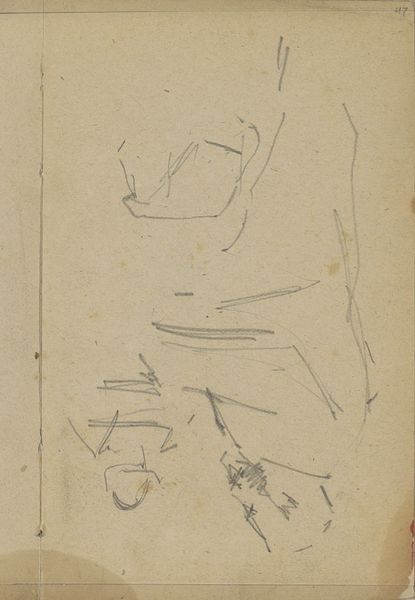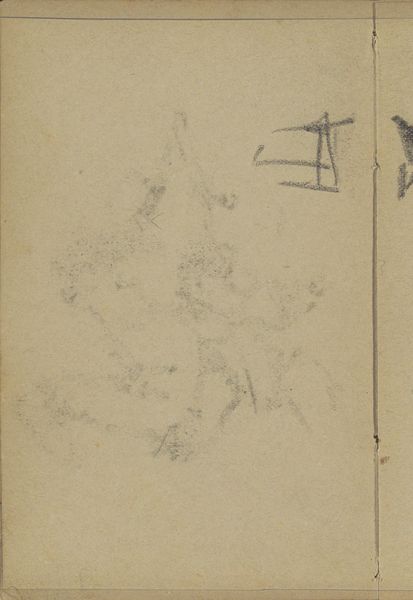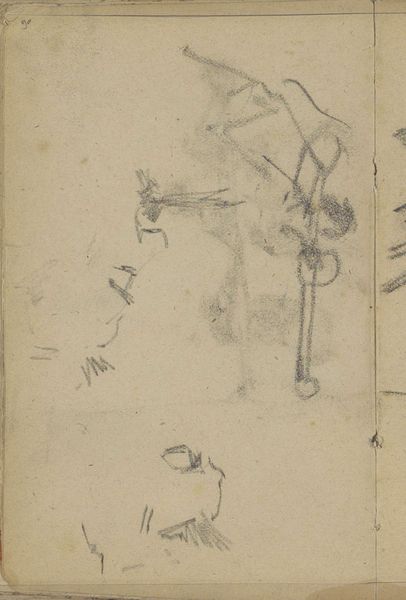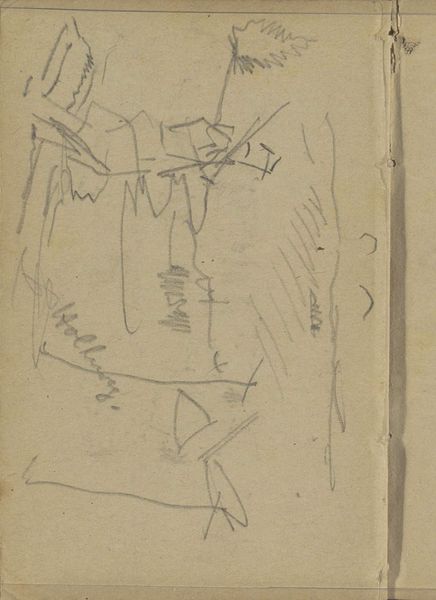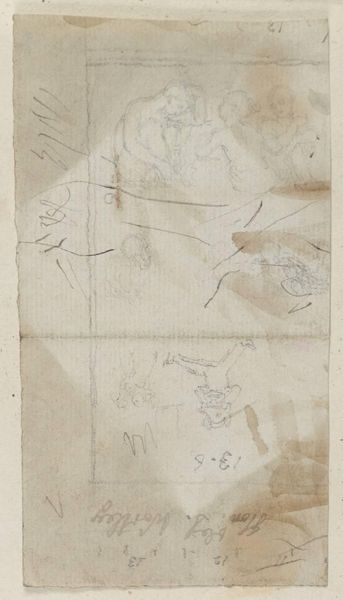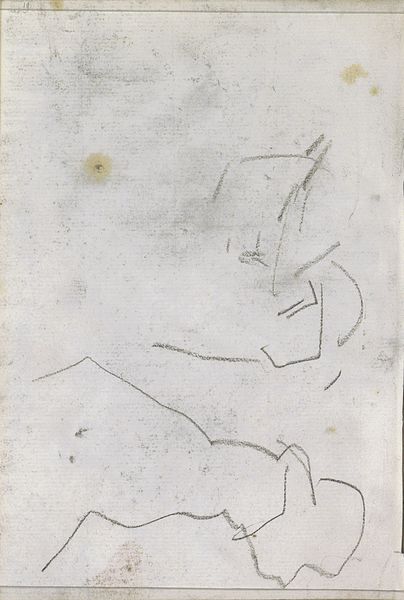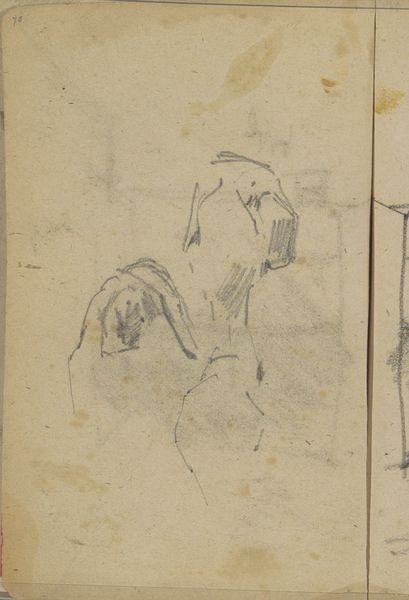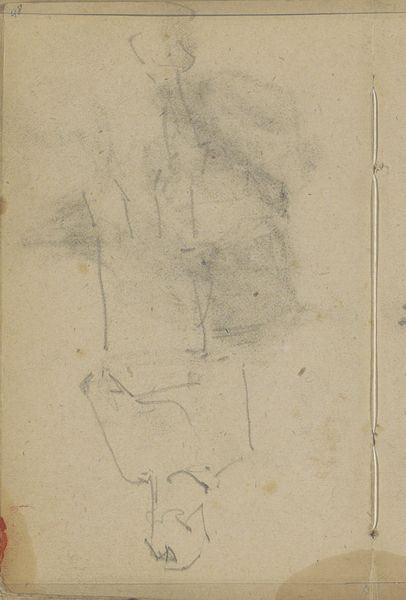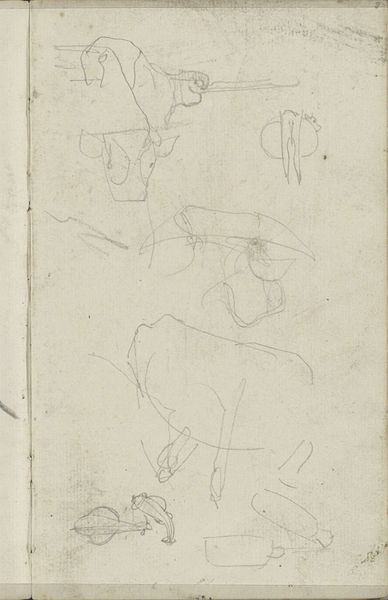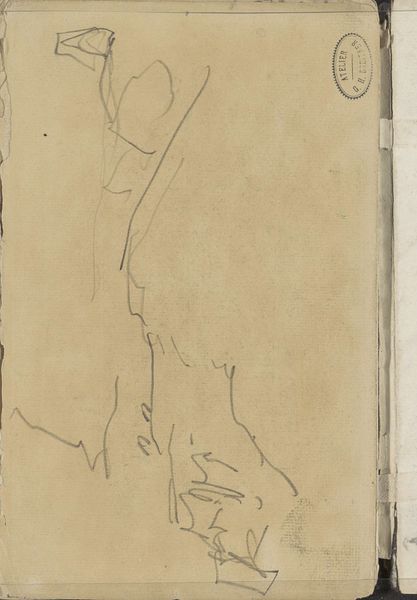
drawing, paper, pencil
#
drawing
#
impressionism
#
figuration
#
paper
#
coloured pencil
#
pencil
#
line
#
sketchbook drawing
Copyright: Rijks Museum: Open Domain
Editor: So, this is “Studieblad met figuren,” a figure study from George Hendrik Breitner, made between 1881 and 1883. It looks like it's pencil and coloured pencil on paper, currently held at the Rijksmuseum. It gives off an interesting impression, almost like a fleeting memory due to the incomplete nature of the figures. How do you interpret this work? Curator: From a historical standpoint, it’s fascinating to consider this in relation to the burgeoning art market of the late 19th century. Breitner, like many Impressionists, was grappling with how to depict modern life, particularly in urban environments. These weren’t commissioned portraits, were they? What do you think that sketch-like quality might tell us about Breitner’s intention? Editor: Well, it looks spontaneous. Maybe it reflects the fast pace of modern city life? Almost like trying to capture something ephemeral before it vanishes? Curator: Precisely. Artists sought authenticity, shying away from overly staged or idealized representations. Sketchbooks were a tool for immediacy, reflecting the growing interest in portraying ordinary people in their daily lives, something photography also captured and disseminated. Editor: I never thought about how a sketchbook could make a social statement in that era, challenging classical or romantic notions. Curator: Exactly. The politics of imagery also play a role here. Breitner's sketches challenge traditional modes of art, favoring instead a snapshot aesthetic, almost like documenting real people on the street. The incomplete nature also raises questions of what’s valued as finished versus preliminary in artistic production. Editor: It’s really interesting to consider this study sheet not just as a preparation, but as a deliberate artistic choice in itself, making it a piece that mirrored the sociopolitical shift. Curator: Yes, and hopefully looking at such works can encourage conversations around what is canonised as art and the impact of institutional forces that affect our interpretations and appreciation of them.
Comments
No comments
Be the first to comment and join the conversation on the ultimate creative platform.


